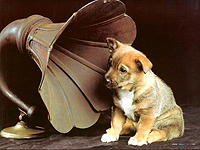Ear diseases are quite diverse. However, they can all lead to a decrease in or loss of hearing. Let's find out how we hear and what is hearing
Content
How the Ear is arranged
 In order for us to perceive sounds, each of us has a system of receptor, mechanical and nervous structures, interrelated. Ear works on the principle of the receiver. Distinguish outdoor, average and inner ear. Outdoor perceives sound oscillations that are enhanced by the middle ear, and the internal subsequently transmits pulses to the brain. The mechanism of hearing is the action of the auditory analyzer.
In order for us to perceive sounds, each of us has a system of receptor, mechanical and nervous structures, interrelated. Ear works on the principle of the receiver. Distinguish outdoor, average and inner ear. Outdoor perceives sound oscillations that are enhanced by the middle ear, and the internal subsequently transmits pulses to the brain. The mechanism of hearing is the action of the auditory analyzer.
The auditory analyzer has a complex structure. Outdoor Ear is the external analyzer department. It consists of ear shell and an outdoor auditory passage and is a curved channel from 2.5 to 3 cm long. Own sink is formed by elastic cartilage and has the ability to narrow. It goes into an outer hearing passage and ends on the outer surface of the eardrum. Outdoor ear has two functions: capture sound waves and then conduct them to the eardrum, protection of the auditory pass from dirt and dust. The latter function is possible due to the complex structure of the auricle.
Properties of ear
Human's ear can determine the sound source, its size and distance. This ability is called binaural effect. The closer to the ear there is a source of sound, the faster it will fall into the ear, t.E. the smaller the distance will overcome. The distance between the ears is approximately 21 cm, and the sound entering both ears is different by the power of oscillations and the time of receiving the sound signal by each ear. T.To. Sounds are perceived by the ear volume, the binaural effect allows you to select some specific sound source among several, as well as its angular movement in the horizontal plane, and it is possible even with severe noise. The accuracy of determining the movement of the sound source reaches 4°.
Own sink transmits air fluctuations in the sound system of the middle ear scrambled with it – auditory bones. This system reduces the amplitude of oscillations and at the same time increases the power of the sound, and the motion of the eardrum increases 20 times. The muscles of the cavity of the eardrum participate in the process of transferring sound through the inner ear, and then in the perilimf. Muscle system of the drum cavity prevents partial loss of sound as a result of transition from the air to the liquid medium perilimph.
Sound wave
 The intensity of the sound waves is estimated in decibels, as well as the frequency of the tone of the sound, which each person perceives individually. The sound is higher than the greater the oscillations. A man with good hearing is able to hear the frequencies of 20 hertz. Below this frequency he will not hear. But the maximum low threshold of hearing – from 100 to 300 Hz. It should be borne in mind that different people have a threshold of hearingness due to the physiological state and age. The threshold of hearing depends on hearing training. It happens on the contrary: at the same person at different times the threshold of hearingness may be different.
The intensity of the sound waves is estimated in decibels, as well as the frequency of the tone of the sound, which each person perceives individually. The sound is higher than the greater the oscillations. A man with good hearing is able to hear the frequencies of 20 hertz. Below this frequency he will not hear. But the maximum low threshold of hearing – from 100 to 300 Hz. It should be borne in mind that different people have a threshold of hearingness due to the physiological state and age. The threshold of hearing depends on hearing training. It happens on the contrary: at the same person at different times the threshold of hearingness may be different.
Threshold of hearing can be measured. The audiometry method is that a person determines the difference between two signals – The weakest sound without interference and the standard note, which is reproduced by the instrument intended for determining the threshold of hearing. If a person can determine the volume, absolute height, as well as the timbre of sound, it means that it has a musical hearing. Musical rumor is absolute, relative and inner. Under absolute hearing, it means the ability to identify the absolute height of the sounds of musical instruments, and at the same time not to compare them with the reference sound of a particular note. The ability to identify musical intervals and the difference between heights of sounds – This is a relative sound. Remember sound quality, melodiousness and sequence – Hearing internal.









